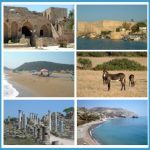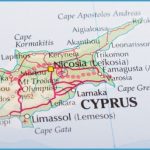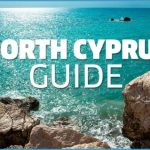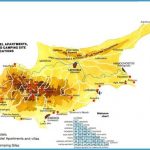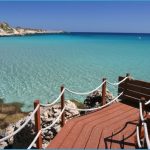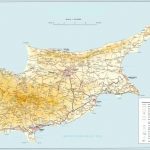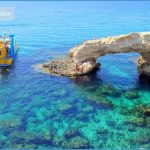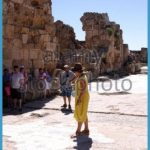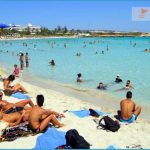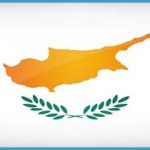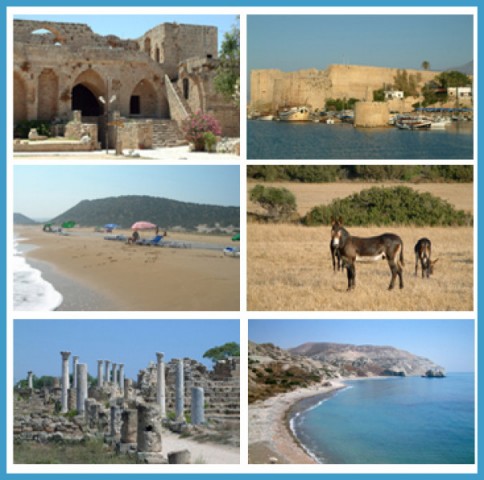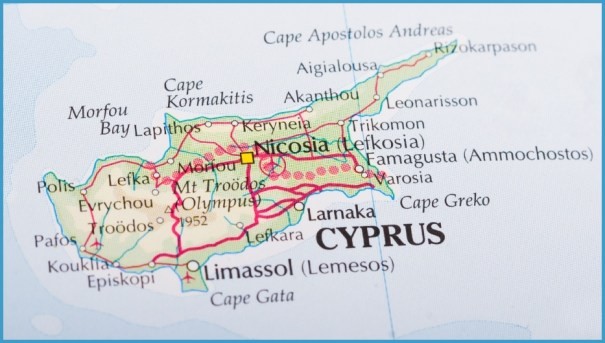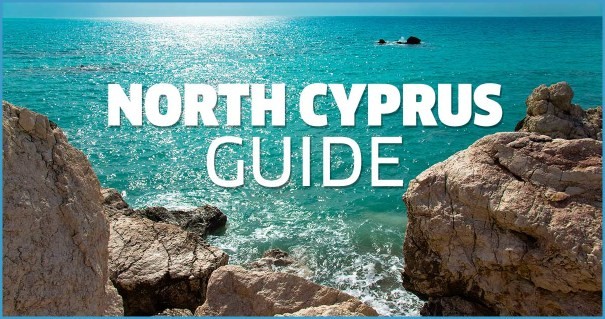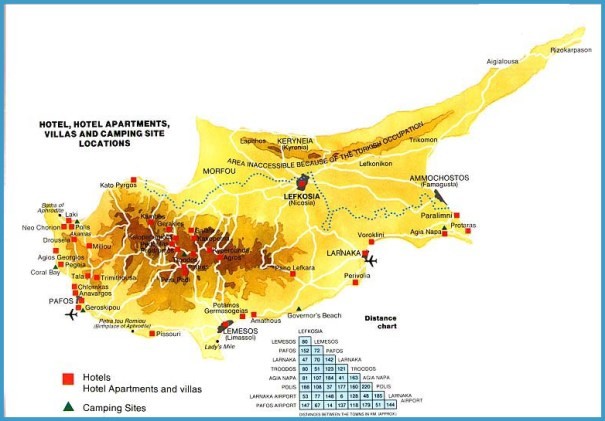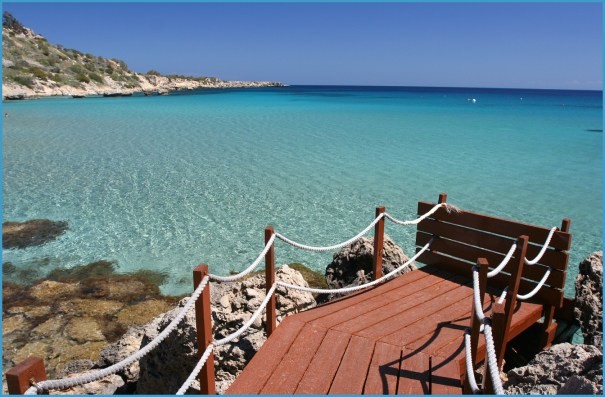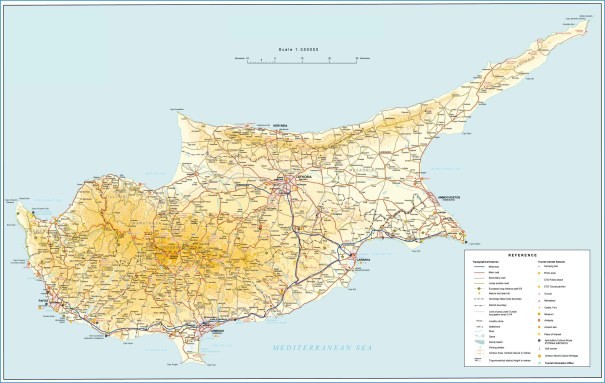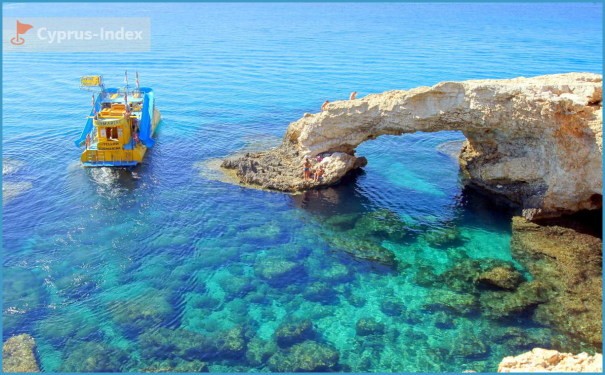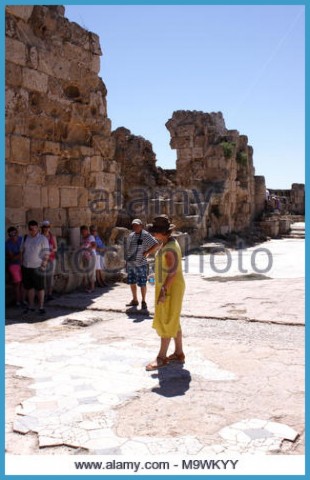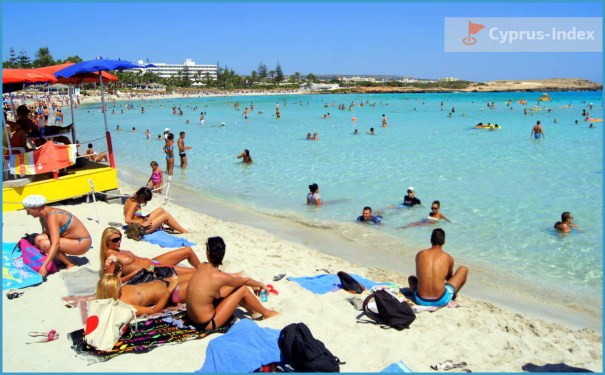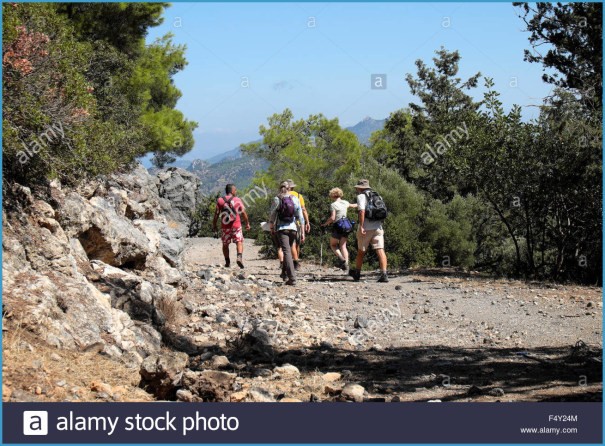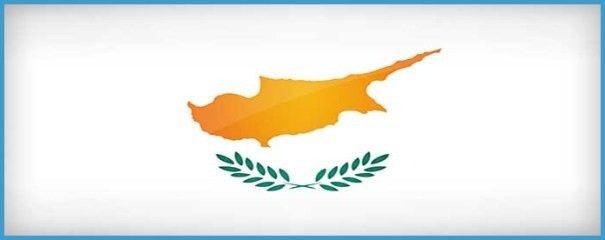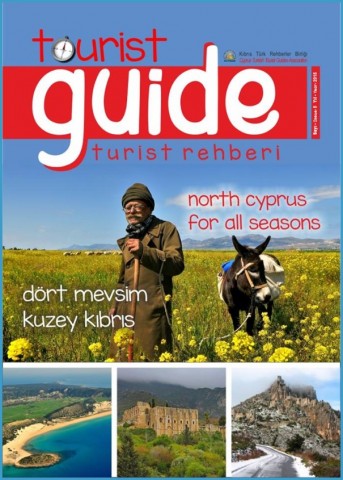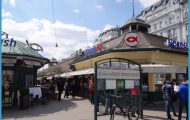ANCIENT NAMES OF CYPRUS
Cyprus, according to ancient as well as recent writers, was given many names, the most important of which are:
In addition, many adjectives were ascribed to Cyprus, like chalkoessa (for the many veins of copper), asselia (for its fishing activities), iera nisos (for the many saints), evinos (for the many and varied wines), eveleos (for its olive oil and its many olive-trees), dasoessa (for its forests), nisos eroton (island of love), perikallis (beautiful), Afrodisia (island of Aphrodite), etc.
Cyprus Guide Book
Cyprus Travel | Places to visit in Cyprus
The origin of the current name of Cyprus
Much has been written about the current name of the island, either by ancient writers or present-day historians, philologists, linguists and other researchers. The main interpretations concerning the origin of KYPROS (Cyprus) are five: (a)From a plant, called kypros (henna). For a long time it was believed that Cyprus obtained its name from a shrub called kypros or henna (Lawsonia alba). Though this plant is native to North Africa, Arabia, Persia and India, it was never plethoric in Cyprus and even today scarcely one finds such a shrub. It is unlikely that a relatively large island with a long history and a civilization dating back to a few millenia got its name from a non-native shrub. (b) From a town of Cyprus named Kypros. According to Onorios and Isidoros, the name is due to a town lying between Kyrenia and Akanthou in the northern part of Cyprus. However, such a town has never been unearthed nor has historically been ascertained that there was an important town by this name. (c) From Kypris. A number of ancient writers use the adjective “Kypris” for Aphrodite, while Homer calls Aphrodite Kypris. Though a few writers underline that Kypros (Cyprus) ows its name to Kypris, nevertheless it is Kypris that has derived its name from Kypros, since Kypris was the Goddess of Kypros (Cyprus).
Cyprus Guides Association
(d) From Kypros, the son or daughter of Kinyras. Evstathios, relying on older sources, explains the name of the island from Kypros, the son of Kinyras, while Stephanos Byzantios and K. Porphyrogennitos, relying on older sources too, ascribe the name to the daughter of Kinyras, Kypros. Kinyras is a historical person, mentioned by Homer, even though his genealogy is lost in the myths of antiquity. Furthermore, Kinyras was the king of the entire Cyprus and not only of Pafos. From ancient writers including Homer, we learn that Kinyras was called king of all Cypriots. It is not, therefore, surprising that the son or daughter of one of the most renowned, wealthy and powerful kings of Cyprus is associated with the name of the island. Afterall, many Greek islands obtained their name from the sons of kings, mythological persons or other significant personalities, like Mykonos, Paros, Naxos, Andros, Samos, etc. (e) From copper.
Copper ingot from Egkomi (c. 1200 B.C)
The Bronze period in Cyprus starts from 2500 B.C. and continues until 1050 B.C. During this period the production and exploitation of copper brought about a true revolution in the every day life and economy of Cyprus. Cyprus, on account of copper, became well-known in the then known world. The strategic position of Cyprus and the production of copper made Cyprus a pole of attraction for the different countries of the world. Among those who were lured by the copper trade of Cyprus, were the Myceneans (Achaians), who settled in Cyprus in the 14th century B.C. and thereafter Hellenised the island. The name Kypros appeared not as late as the Homeric times (8th century B.C.) but even earlier and, according to Knossos and Pylos tablets, at least in the 13th century B.C. K.Hadjioannou writes that since Cyprus was among the oldest copper producing countries in the Near East and this production started by the island’s pre-Greek population, it is likely that the word “kypros” meaning “copper” was a pre-Greek word and most probably an Eteocypriot one.
Cyprus Guide Guardian
(Eteocypriots were the autochthonous Cypriots). If this is true, then, he concludes, the name of the island is derived from copper. Currently, copper in many languages is named after the name of Kypros (Cyprus): English=copper, German = Kupfer, French = cuivre, Swedish = Koppar, Danish (Kobber) which derived from the Latin word cuprum. Concluding, Kypros (Cyprus) most probably derives from Kypros, the son or daughter of Kinyras. If, however, it is proved that there was an Eteocypriot word “kypros”, meaning copper, the etymology of Cyprus is automatically proved.
Cyprus Guide For Tourist Photo Gallery
Cyprus Travel Guide and Travel Information
THE POLITICAL PROBLEM OF CYPRUS
Nearly every visitor to Cyprus, who sees a divided country and particularly a divided European capital, asks to know the history behind this shameful situation. Cyprus acquired its independence in 1960, when the population, according to the official census of 1960, was 81.9% Greek Cypriots, including a few tiny minorities, and 18.1% Turkish Cypriots. The presence of the Turkish Cypriots in Cyprus dates back to the 16th century A.D. following the Ottoman conquest of Cyprus, while the Greek Cypriots have been living in Cyprus at least for four thousand years. The Turkish Cypriots, according to research work carried out by one of the authors of this touring guide (G. Karouzis, “Proposals for the Solution to the Cyprus Problem”, 1976), were scattered throughout the entire area of Cyprus and never constituted a majority in any region of Cyprus. Cyprus, before becoming an independent Republic (1960), was a British colony since 1878. The relations among the two communities, during the colonial era, were friendly and harmonious, strained only a few years before 1960, when the Greek Cypriot majority started a struggle demanding Cyprus union with Greece. In fact the Turkish Cypriots were encouraged to juxtapose a counter-demand aiming at the partition of Cyprus between Greece and Turkey. The initial refusal of the British to recognise the Greek Cypriot demand for freedom, the demand of the Turkish minority for partition and the struggle of the Greek Cypriots for liberation (195559) brought about a “strange” independence in 1960. Thus, the independence of Cyprus in 1960 was a compromise formula between the Greeks, the Turks and the British. Britain was to keep two sovereign military bases on the island, Greece and Turkey were to station permanent contingent forces and all three powers (Britain, Greece, Turkey) became guarantor powers of Cyprus’ independence, while the constitution of the newly-established Republic was complex. As was expected, the established regime was unworkable, the smooth running of the Republic was problematic, while insurmountable other problems were confronted. In 1963 Archbishop Makarios, first president of the Republic, proposed certain amendments, which were followed by revolt against the legal Government on behalf of the Turkish Cypriots. Thus, the first Turkish enclaves in key geographical positions (including Nicosia town) were set up, while Turkey threatened to invade the island. No doubt the dividing and separatist elements incorporated in the Cyprus constitution found expression in the “enclaves” established and violence broken out. The presence of a United Nations peacekeeping force in the island, well-known all over the world, starts from this date.
Cyprus Audio Guide
Despite many resolutions adopted by the U.N. Security Council and the General Assembly, supporting the independence, sovereignty and territorial integrity of Cyprus and despite many other efforts between 1964 and 1974 for a viable solution, no success was achieved. Turkey invaded Cyprus in 1974 following a coup d’etat by the junta in power in Greece staged against the lawful Government and particularly against President Makarios on 15 July 1974. Both the coup d’etat and the invasion have been interpreted by many objective scholars and political analysts as a twin prefabricated act to partition the island. Thus, 37,5% of the territory of the Republic is currently occupied, about 200.000 Greek Cypriots are refugees in the free part of Cyprus, hundreds are still missing and hundreds are enclaved in the Karpasia peninsula. Simultaneously, as many as 200,000 settlers from Turkey were brought to northern Cyprus and tens of thousands of Turkish troops are permanently stationed in the occupied part. Ever since 1974 the Turkish side insists on the “fait accomplis” of the invasion, something the Greek side does not accept. The Greek Cypriots, in their despair that nobody was willing to help them regain the unity, integrity and independence of Cyprus, particularly the application of human rights, made various concessions including the acceptance of a bi-regional federation, though no territorial basis for the formation of a federation existed, on the grounds that such an arrangement will provide a strong central authority with substantive powers, the withdrawal of the occupation forces from the island and the implementation of human rights and democratic institutions for all Cypriots. Discussions so far have not reached any solution and Cyprus remains a divided country, with an artificial dividing line of about 160km. The two parts are separated by a buffer zone of a width that varies from 10m to 5km within an area of about 3% of the total area of Cyprus. So far, not only the resolutions of the United Nations, calling for withdrawal of foreign troops from Cyprus and the return of refugees to their houses, have been ignored, but a “Turkish Republic of Northern Cyprus”, an illegal entity, has been established in 1983. Since May 2004, Cyprus is a full member of the European Union.
Access to the Green Line. The “Green Line” or “Attila Line” which divides Cyprus, passes through the heart of old Nicosia. Those visitors who would like to see on spot the dividing line, can approach it from any point in the west near Nicosia airport (currently not functioning), the “Gregoriou School”, the suburb of Agios Pavlos, Central Prisons, Ledra Palace, Pafos gate, north of Archbishopric, Pallouriotissa Gymnasium, Agios Kassianos, Kaimakli, Trachonas, up to SOPAZ in the east.

